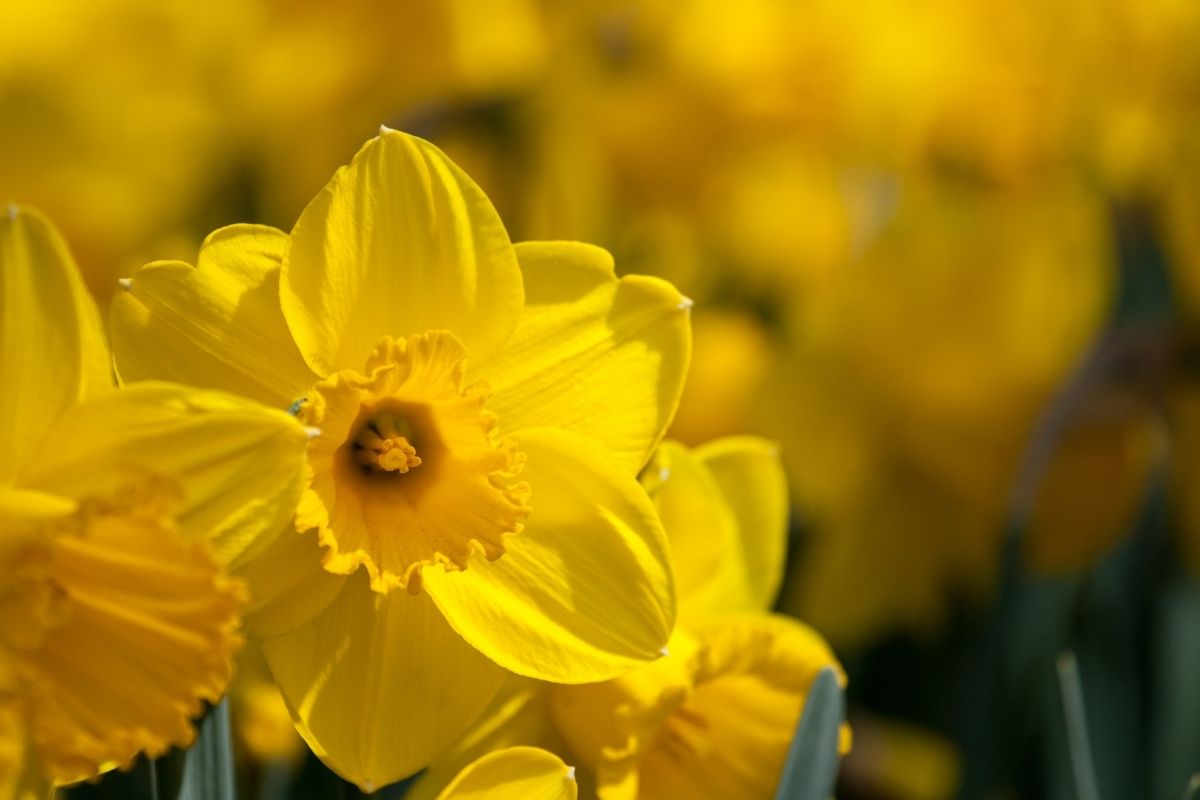
Spring Flowering & Pollinator Friendly Bulbs
Support pollinators next spring by planting ‘Feed the Pollinators’ collections this fall. Florissa’s introduction of two new special collections offer a spring season’s worth of blooms to boost the nectar rich food sources for pollinators while enhancing the beauty of your garden.
In early to mid-spring, from the moment they awaken, pollinators are foraging for nectar. It’s an important time for them, because our gardens are just beginning to spring to life. Little green shoots are poking through the bare soil, trees are budding and leafing out. Blooms are beginning to appear, but they don’t arrive all at once. Honey bees, as well as wild bees and other pollinating insects need fuel to survive and they are especially attracted to yellow, white, and blue blooms at this time.
Feed the Pollinators (Early-Mid Spring)
The early to mid-spring ‘Feed the Pollinators’ collection features nectar rich bloomers that are hardy, tough and beautiful.
Eranthis Cilicica, commonly known as Winter Aconite, and Crocus ‘Snowstorm’ are among the first blooms of spring. Don’t be fooled by their smaller size, these blooms provide an important food source for pollinators when not much else is available, standing up to unpredictable weather conditions.
Botanical Tulip ‘Praestans Shogun’ is a multi-flowering tulip producing three to four brilliant orange yellow blooms per stem.
Yellow Narcissi completes the collection with long-lasting golden yellow trumpet blooms. It’s known that bees land on spring flowers with the highest sugar content, and the large yellow trumpets protect the nectar from wind and rain. Easy to naturalize, plant the bulbs in this collection once and leave them in the ground – you’ll be rewarded year after year with a growing tapestry of blooms. Plants grow from 10-40 cm (4-16”) tall. Hardy to Zone 3.
One of the easiest things any gardener can do is plant bulbs. If you’ve never planted spring flowering bulbs before, check out our fall bulb planting instructions.
Feed the Pollinators (Mid-Late Spring)
As one season unfolds into another, Florissa’s ‘Feed the Pollinators’ mid to late spring collection includes flowering bulbs to ensure there’s something in the garden for every pollinator from bees to moths and butterflies. Allium Purple Sensation’s strong stems support a 15 cm (6”) ultraviolet flowering globe made up of tiny florets which pollinators adore. Growing 90 cm (36”) tall, these blooms add vertical structure and whimsy to the garden.
Allium Graceful Beauty has 8 cm (3”) pristine white flowerheads with lavender stamens and purple anthers, giving it a cheerful polka dotted appearance. Add a few stems to your spring bouquets, as alliums make great cut flowers.
Commonly known as Windflowers, Anemone de Caen Gem Mix showcases poppy-like flowers with silky colored petals in deep shades of royal blue, magenta, and crimson red. Flowering three to four weeks in the garden from late spring to early summer, these dark centered blooms attract honeybees and other pollinating insects. They’ll also make great plant companions to Tulip ‘Purple Doll,’ a late spring tulip with pointed deep purple petals and intense green flames. Long-lasting in the garden, this tulip takes on a gorgeous lily flowering form. In late spring, shades of ultraviolet are best for attracting bees as they can see the rays from the petals reflected in the sun.
Plants in this collection grow 25-90 cm (10-36”) tall. Hardy to Zone 3.


